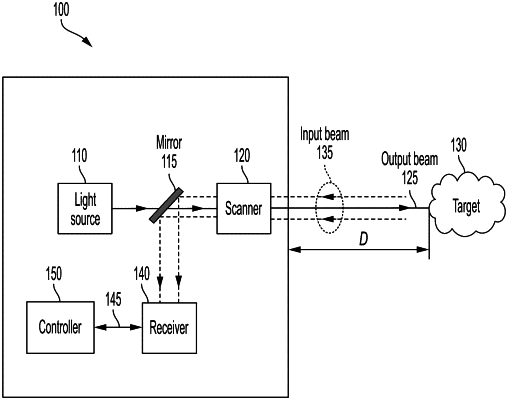| CPC G01S 7/4915 (2013.01) [G01S 7/4816 (2013.01); G01S 7/4817 (2013.01); G01S 17/06 (2013.01); G01S 17/58 (2013.01)] | 19 Claims |

|
1. A readout integrated circuit of a frequency-modulated continuous wave (FMCW) LiDAR system, the readout integrated circuit comprising:
a transimpedance amplifier configured to:
receive an optical signal of an optical mixer output from a balanced PIN photo diode;
convert the received optical signal into a current signal comprising a mixed signal of high and low frequencies; and
convert the current signal into a voltage signal comprising a low frequency sinusoidal waveform after filtering a high frequency;
a comparator configured to:
receive the voltage signal from the transimpedance amplifier; and
generate a pulse signal from the voltage signal;
a primary counter configured to:
receive a primary signal based on the pulse signal generated by the comparator; and
count a number of pulses of the primary signal during a certain time period to generate primary counter data;
a reference counter configured to:
receive a reference signal having a reference frequency corresponding to a reference distance; and
count a number of pulses of the reference signal during a time period to generate reference counter data; and
an arithmetic logic unit configured to:
receive the primary counter data and the reference counter data; and
calculate depth information, which indicates a distance of a target based on the primary counter data and the reference counter data, by multiplying the reference distance by a ratio of the reference counter data to the primary counter data.
|